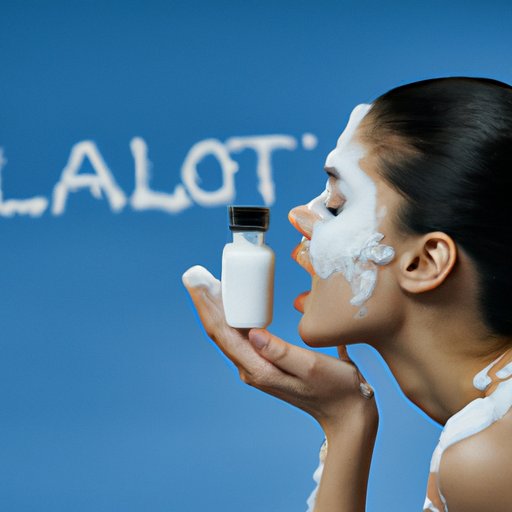Introduction
Talc is a mineral composed of magnesium, silicon, oxygen, and hydrogen. It has been used in cosmetics and other personal hygiene products for decades due to its absorbent and lubricating properties. However, there has been some debate over whether talc is bad for skin health. In this article, we will explore the pros and cons of using talc in skin care products and discuss the science behind it.
Examining the Link Between Talc and Skin Health
The use of talc in skin care products has both benefits and drawbacks. On the plus side, talc can help absorb moisture and reduce friction, making it a useful ingredient for those with dry or sensitive skin. It can also be used to reduce oiliness, as talc is an effective astringent. Furthermore, talc can be useful in preventing diaper rash and other forms of irritation.
On the other hand, talc has been linked to certain health risks. Some studies have suggested that talc can irritate the skin and cause inflammation. Additionally, talc has been found to contain trace amounts of asbestos, which is known to cause cancer. This has raised concerns about the safety of talc-based cosmetics and other personal hygiene products.
Is Talc an Effective Skin Care Ingredient?
Despite these risks, many people still choose to use talc-based skin care products. However, it is important to understand the potential dangers of using such products. The most serious risk is the potential for long-term exposure to asbestos, which is associated with a number of cancers, including mesothelioma. Additionally, talc can lead to skin irritation, especially when used on sensitive areas of the body.
Fortunately, there are safer alternatives to talc-based skin care products. These include natural ingredients such as jojoba oil, shea butter, and aloe vera, which provide the same moisturizing and anti-inflammatory benefits without the potential risks posed by talc.

Understanding the Science Behind Talc and Skin Health
In order to fully understand the potential benefits and risks of using talc-based skin care products, it is important to understand the chemical composition of talc. Talc is composed of magnesium, silicon, oxygen, and hydrogen, and it is these components that give talc its absorbent and lubricating properties.
However, it is also important to consider how talc affects skin cells. Studies have shown that talc can interfere with the normal functioning of skin cells, leading to inflammation and irritation. Additionally, long-term exposure to talc-based products has been linked to increased risk of certain types of cancer.
Conclusion
In conclusion, talc can be a useful skin care ingredient, but it is important to understand the potential risks associated with its use. While talc can help absorb moisture and reduce friction, it can also lead to skin irritation and may contain trace amounts of asbestos. Therefore, it is important to be aware of the potential risks before using talc-based products. Additionally, there are safer alternatives available that can provide similar benefits without the same risks.
Overall, talc is not necessarily bad for skin health, but it is important to be aware of the potential risks before using it. By understanding the science behind talc and skin health, you can make an informed decision about whether or not to use talc-based products.


